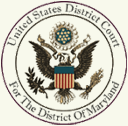What to do with your inherited retirement account

For decades, common financial planning wisdom has encouraged almost all-American workers to maximize their contributions to qualified retirement accounts. Indeed, doing so can be a powerful way to reduce your current income tax liability, grow your savings exponentially tax-free, and, in most states, protect your savings from claims of creditors. And by and large, this is what most American workers have done.
The result is that Americans have gradually amassed huge amounts of wealth in these types of qualified plans. It is increasingly common for an IRA or 401k to be the highest value item of property that an American owns. For purposes of estate planning, however, it is important to understand that very special rules apply to these types of accounts. Gone are the days when you can write up a quick will or trust and be assured that everything you own will pass to your heirs or beneficiaries according to the terms of those legal documents. Instead, it has become critically important for families to understand both the laws applicable to wills and trusts and the complex laws governing retirement plans. Failure to understand these laws can exact a heavy price. The following are some of the crucial considerations if you end up with a qualified inherited retirement account.
Obtain Professional Advice Before Filing a Claim Regarding an Inherited Retirement Account
If a loved one dies owning a qualified retirement plan such as an IRA or 401k, and if you suspect that you are a beneficiary of that plan, the first thing you should do is contact the financial institution or custodian of the plan as soon as possible. Often a copy of the retirement plan statement will include contact information for the financial institution where the retirement plan is held. You should speak with the beneficiary claims department and let them know that you believe you may be a beneficiary on your loved one’s retirement account. Financial institutions typically will not confirm or deny beneficiary status over the phone. However, they will confirm certain information with you such as your full name, date of birth, address, and possibly your Social Security number. They will also typically request that you provide them with a copy of the plan owner’s death certificate. If you are confirmed to be a beneficiary, they will send you a copy of a beneficiary claim form at the address that is listed in their system.
Once you obtain the claim form, you should read it carefully and seek the advice of a competent tax professional such as your CPA, your estate planning attorney, or your financial advisor. These professionals can help you understand the various options that such beneficiary claim forms provide.
For example, most claim forms allow at least three options for making a beneficiary claim:
- A lump-sum payout of the inherited retirement accountproceeds to which you are entitled
- Establishing an inherited IRA account with the same financial institution
- Making a trustee-to-trustee transfer of the plan benefits to another institution that will receive the benefits as an inherited IRA or a spousal rollover
Depending on the financial institution, additional options may be available. If you choose to take a lump-sum payout of the inherited retirement account proceeds, it is critical to remember that qualified retirement plans (with the exception of Roth IRAs) have not yet been subject to income tax. Thus, if you withdraw the plan proceeds in the form of cash (or a check that is sent to you) and you deposit that check, you will be responsible for paying income tax on every dollar that is deposited into your bank account. The financial institution will notify the IRS that the payout was made to you, and you will receive a 1099 form from the financial institution at the end of the year for your own income tax reporting purposes. Depending on your annual income, this additional income might easily push you into a higher tax bracket and create significant income tax liability for that year.
As a result of this potential tax liability, many of the beneficiary claim forms will ask you whether you want to withhold a percentage of the payout for payment of income tax. The financial institution may automatically determine the amount that is withheld, or it may allow you to specify how much to withhold. If you have the option of determining how much to withhold, you would be wise to seek the advice of an income tax professional to help you determine the appropriate amount.
Before Taking a Lump-Sum Payout, Consider This!
Opting for a lump-sum payout may be tempting even with the potential high tax liability. But before you take that option, you should consider some of the benefits provided by the other options.
Spouse of IRA Owner
First, if you are a surviving spouse of a deceased qualified plan owner, you can transfer the inherited account into your own IRA (often called rolling over) and treat the account as your own IRA. This allows you to use your age to determine when you must begin to take required minimum distributions and how much you must withdraw annually. This option can be particularly beneficial if you are younger than your deceased spouse and have no present need to begin withdrawing amounts from the IRA. By delaying withdrawals until you reach age 72, the account has more time to grow in a tax-deferred environment. In addition, certain creditor protections are available for your own IRA that are not available for an inherited IRA.
Alternatively, you can choose to accept the inherited retirement account as an inherited IRA. This approach can be useful for surviving spouses younger than 59 ½ who need to access the money in the plan immediately to provide for their support. With an inherited IRA, a surviving spouse who is younger than 59 ½ would not be subject to the 10 percent early withdrawal penalty that would be assessed if the surviving spouse were to roll over the deceased spouse’s IRA into the surviving spouse’s own plan. However, in most states, an inherited IRA will not afford you any creditor protection, unlike rolling over the IRA into your own IRA. For those with creditor protection concerns, this might be an important factor to consider.
Non-spouse Beneficiaries
If you are the beneficiary of a plan owner, but not the spouse or a beneficiary who otherwise fits within the definition of an Eligible Designated Beneficiary (i.e., a surviving spouse, a minor child of the deceased owner, a disabled or chronically ill individual, or any other person who is not more than ten years younger than the deceased account holder), then you generally must withdraw all plan assets to which you are entitled by December 31 of the tenth anniversary year of the plan owner’s death. If you fail to do so, you will be subject to a 50 percent penalty for the amount that you should have withdrawn by that time.
If you are an Eligible Designated Beneficiary, however, you will qualify for a greatly reduced rate of required minimum distributions. This rate is generally calculated over your life expectancy. A minor child is not required to take out any distributions until the child reaches the age of majority. At that point, the ten-year rule applies the same as it would for a non-Eligible Designated Beneficiary.
Regardless of how quickly you are required to take out the plan benefits, do not forget that the distributions will be reported as income on your tax return for that year. Be sure to set aside (or have the financial institution withhold) enough so that you can pay the tax on that income when the time comes.
Do Not Forget to Name Beneficiaries of Your Own
Failure to name beneficiaries is a common mistake when receives an inherited retirement account. When a plan owner dies without having named a beneficiary (whether for the plan owner’s own plan or an inherited plan), significant hassle and increased tax liability can result. The IRS provides more favorable tax treatment for individuals who withdraw retirement plan proceeds than for a trust or estate making similar withdrawals. When no beneficiaries are named on a retirement plan, the default provisions of the plan often make the plan proceeds payable to the estate of the deceased plan owner. Even though the money will eventually pass to the heirs of the estate, this can be a needlessly expensive mistake.
Do Not Go It Alone
An article of this length cannot adequately cover all of the estate planning nuances regarding an inherited retirement account. Its aim, however, is to help you better understand the need to obtain sound financial, legal, and tax advice when claiming retirement plan benefits from a deceased loved one. There are numerous potential pitfalls that can easily be avoided with the help of a competent professional advisor. Do not hesitate to reach out to one when the need arises. At McDonald Law Firm, we are available for virtual consultations. Call Andre O. McDonald, a knowledgeable Howard County, Montgomery County and District of Columbia estate planning, special-needs planning, veterans pension planning and Medicaid planning attorney at, (443) 741-1088; (301) 941-7809 or (202) 640-2133 to schedule a consultation.
DISCLAIMER: THE INFORMATION POSTED ON THIS BLOG IS INTENDED FOR EDUCATIONAL PURPOSES ONLY AND IS NOT INTENDED TO CONVEY LEGAL OR TAX ADVICE.











